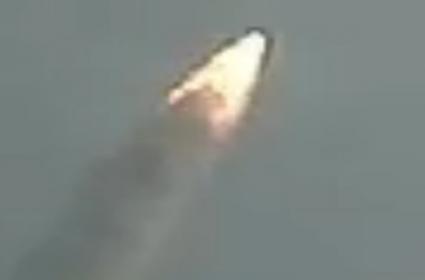Navigation Satellite PSLV-C31 Launched, Successfully Enters Orbit

Sriharikota: An Indian Polar Satellite Launch Vehicle (PSLV) rocket blasted off successfully with the country's fifth navigation satellite IRNSS-1E from the rocket port here on Wednesday. The satellite entered its orbit in 19 minutes after the launch.
It is the fifth regional navigation satellite. The 320-tonne 44-metre rocket (PSLV-C31) was launched from the second launch pad at the Satish Dhawan space centre here at 9.31am and deploy the 1,425 kg fifth navigation satellite into as sub-geosynchronous orbit 19 minutes and 20 seconds later at an altitude of 503 km from above the earth.
As part of the Indian Regional Navigation Satellite System (IRNSS), comprising seven spacecraft, the fifth satellite (IRNSS-1E) will also aid terrestrial, air and maritime transport, besides giving standard positioning services at pat with global positioning system to all users. The navigation system will also be used for disaster management, vehicle tracking and fleet management, integration with mobile phones, mapping and geodetic data capture, visual and voice navigation for drivers and others.
Till date India has launched four regional navigational satellites (IRNSS-1A, 1B, 1C and ID) as part of a constellation of seven satellites to provide accurate position information service to users across the country and the region, extending up to an area of 1,500 km.
"The system will provide two types of services - standard positioning services to all users and restricted services to authorized users," Annadurai said.
Each satellite costs about Rs.150 crore and the polar satellite launch vehicle (PSLV-XL) version rocket Rs.130 crore.
The constellation is planned to be completed this year, with the launch of sixth and seventh satellites in February and March.
The first satellite IRNSS-1A was launched in July 2013, the second IRNSS-1B in April 2014, the third on October 2014 and the fourth on March 2015.
The satellite's payload will transmit navigation service signals to users, operating in L5-band and S-band. An accurate rubidium atomic clock is part of the navigation payload. The spacecraft is also carrying corner cube retro reflectors for laser ranging. The satellite has 12-year lifespan.



















